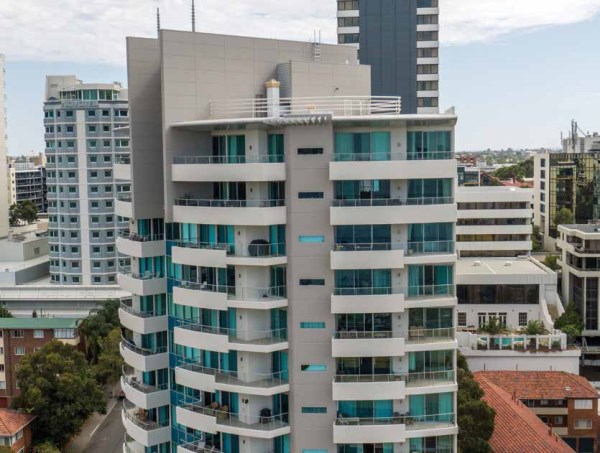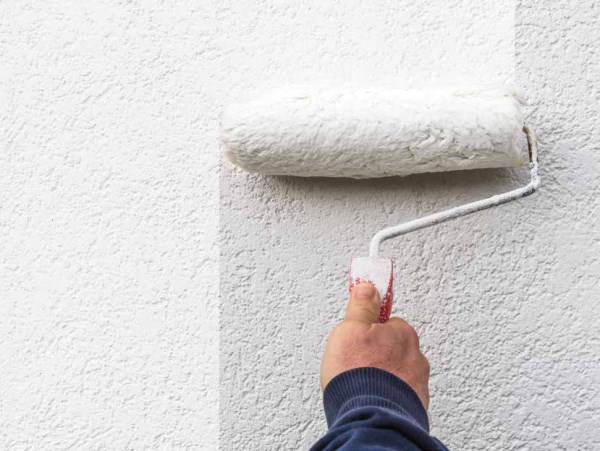Paint Colours to Avoid When Preparing for Strata Building Paintwork

Choosing the right colours for a building re-paint can be a loaded decision. As the Strata Manager, you want to provide the right advice to your committee. You want their choice to provide the best possible appeal, but you also want them to consider how the colour scheme that they choose will impact value as well as long term maintenance. We have put together some colour combinations that we recommend you avoid from the outset.
Interior Paint Colours to Avoid
The most crucial factor to consider for all interior paintwork is how the colour fits the space. Whether you are managing commercial, retail, or residential buildings, always consider how the room will be used, including the expected wear and tear, as well as the texture, colour, and material of the flooring.
Dark Colours in Hallways and Stairwells
Dark colours can make a space appear smaller, making them poorly suited to narrow hallways and stairwells. If these areas also lack natural light, it can incite a feeling of being crammed in.
The Wrong White
White is often a natural choice for interiors and can make a small space appear larger and more inviting. However, it is easy to be led astray. Yellow, brown, green, and dusty pink undertones can seem dirty or dated, while cool whites and greys may appear drab when not in direct sunlight.
Earthy or Muddy tones in High Traffic Areas
The last thing you want is for shared spaces in your building to look dirty, so you need to be careful when choosing earthy or muddy tones. Browns, tans, and yellows, as well as anything with a dingy brown or yellow undertone, will accentuate any dirt that may get trampled in by the constant flow of people, creating a grimy atmosphere.
Interior Paint Colours to Choose
Neutrals are still a good choice, with the previous exceptions in mind. If going with white, the key is to choose a shade that is not too cool and not too warm—this should help you find a balanced, fresh tone.
Do not be afraid to add a splash of colour to common areas, whether it is on the walls or as an accent. This can liven up a room, as well as differentiate between spaces. As a general rule, warm colours create a more welcoming atmosphere, while cool colours instil a sense of calm.

Exterior Paint Colours to Avoid
The exterior of the building is the first thing people see, so it is essential to get it right. Consider factors such as the architecture and materials of the building, as well as surroundings, services you offer and current trends when choosing paint colours.
Brown
There is a reason why one particular shade of brown, Pantone 448C, was reported by the Guardian to be the ‘ugliest colour in the world’ and that is because, when it comes down to it, some colours are not visually appealing. In the case of Pantone 448C, it was chosen to market Australian cigarettes in an attempt to deter smokers—do not let it deter people from your strata building as well.
Too Many or Too Few Colours
Using more than three colours for your external paintwork gives a look that is disjointed and overwhelming. Conversely, using only one colour is likely to be too dull and will not make the building stand out from its neighbours. The sweet spot is three colours.
Bright Colours
Although adding a pop of colour to the front door or shutters can go down well, avoid anything too unusual for the sidings. While kids might love a bright green or yellow, most tenants do not.
Exterior Paint Colours to Choose
Greys have been very popular for exterior paint colours in recent years and while the trend is shifting away from dark tones, the lighter, softer shades are increasing in popularity. In particular, grey beiges, nicknamed ‘greige’, and subtle grey-greens are in growing demand in Australia.
Whatever your colour palette, always follow the three-colour rule for external paintwork—one for the siding, one for the trim, and one for accents, such as the front door. Finally, consider going a shade darker than you initially think for exterior walls as the paint will look lighter in larger areas.
View Comments
(0)